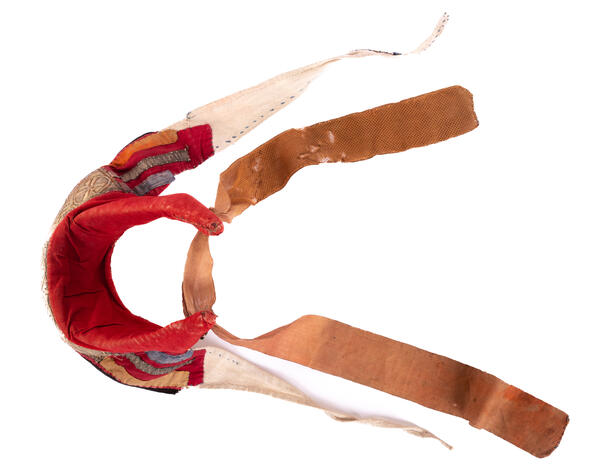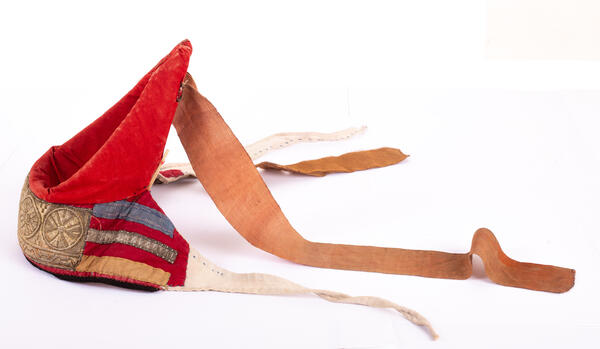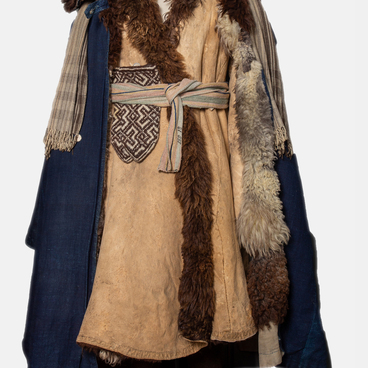“It is an ugly but opulent headdress that is going out of custom, ” this is how Vladimir Ivanovich Dal defined a horned kichka (kika) in the middle of the 19th century.
A complex headdress, topped with two horns, was a characteristic element of the costume worn by young married women in the southern Russian territories. It features, for example, in the attire of peasant women of the Ryazan and Penza governorates, in particular, among the Meshchera women, an ethno-territorial group of the Russian people.
A usual kichka, or volosnik, was a soft canvas cap, tightly fitting the head and designed to cover the hair (hence the second name — volosi means hair in Russian). A hard horned insert and the ornate cap, or “soroka”, enhanced the originality of the cap.
Depending on local tradition, horns were made straight and long, small, curved, pointing upward, backward, or sideways. They were carved from wood and lined with canvas or tightly twisted from canvas, which was then quilted. The outer part of the headdress was called a soroka or cap; for long-horned kichka, it was sewn with covers specially cut out for them. As a rule, this part of the headdress was made of red fabric, such as store-bought cotton red calico. A soroka or cap was decorated with a frontlet with golden or silver embroidery and a back piece embroidered with colored wool, silk or “paper” threads, occasionally gold-embroidered too. The ends of the horns were fastened with a silk ribbon, a net of glass beads or a strip of fringe. The headdress was supplemented with earrings or ball pendants made of goose down.
Horned kichkas with numerous ornaments usually adorned the heads of young women, who were supposed to wear them at their wedding feast and later on major holidays in church or when participating in ritual activities, such as heating the bath (one of the rites of the wedding ceremony) and even while working in the fields. According to historical data, women wearing horned headdresses were not allowed into churches by priests. However, in general, the tradition of obligatory wearing of horned headdresses by young women, associated with the idea of fertility, was preserved in some places as late as in the 20th century.


